I didn’t know that any bird could snore much less those cute little hummingbirds!
Hummingbirds Snore?
I didn’t know that any bird could snore much less those cute little hummingbirds!
Nearly a month ago, I published a post about this American Kestrel that suddenly arrived in our neighborhood. You can see the original pictures here. I was happy to get the pictures I did that day since I hadn’t seen this bird before and I was able to mark it off of my lifetime birding list. I wasn’t sure I would get another opportunity like this. As a novice “bird watcher,” this is exciting stuff. I understand that Kestrels are one of the few birds that will eat other birds.
The pictures aren’t great, but as a record of spotting this bird, they would suffice. I use a Canon SX50 HS which has a 50x zoom that goes from 24mm to 1,200mm. One would think that it would deliver an up close and personal view of anything you wanted, but often even that reach doesn’t seem long enough.
Since then, we have watched as a Curve-billed Thrasher took to the offense to try and keep the Kestrel away from its nest and other neighborhood birds have become a bit uneasy as well.
Imagine my surprise when I walked in the courtyard this morning and saw this:
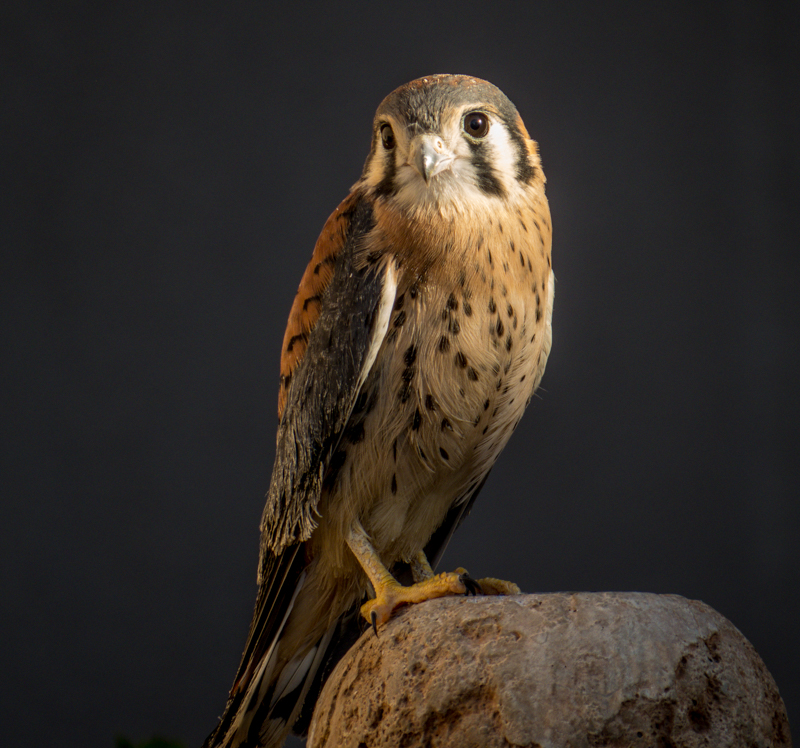
As a matter of perspective, here is a picture taken when we had been in the house only a while and it will give you an idea of the location of the fountain on which the bird has perched.
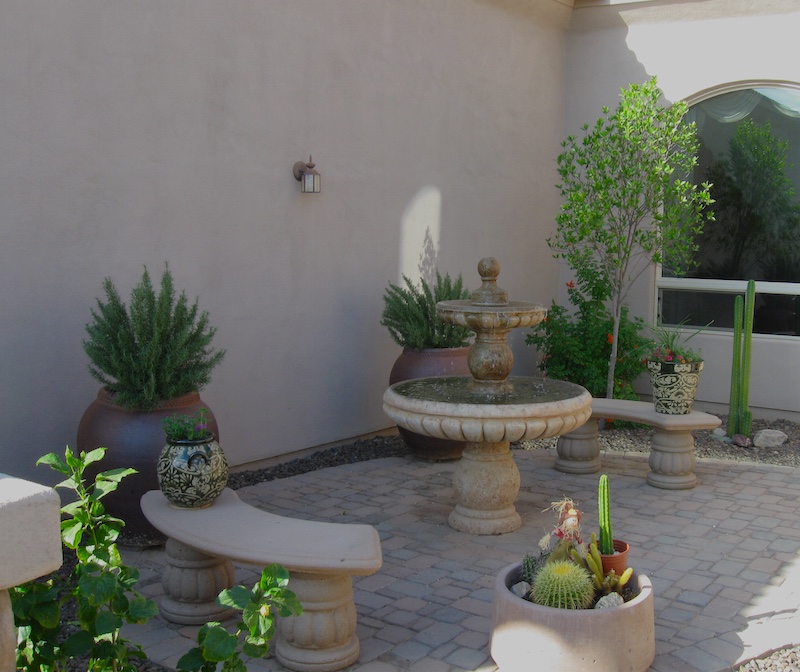
And here is one last picture of this very pretty bird.
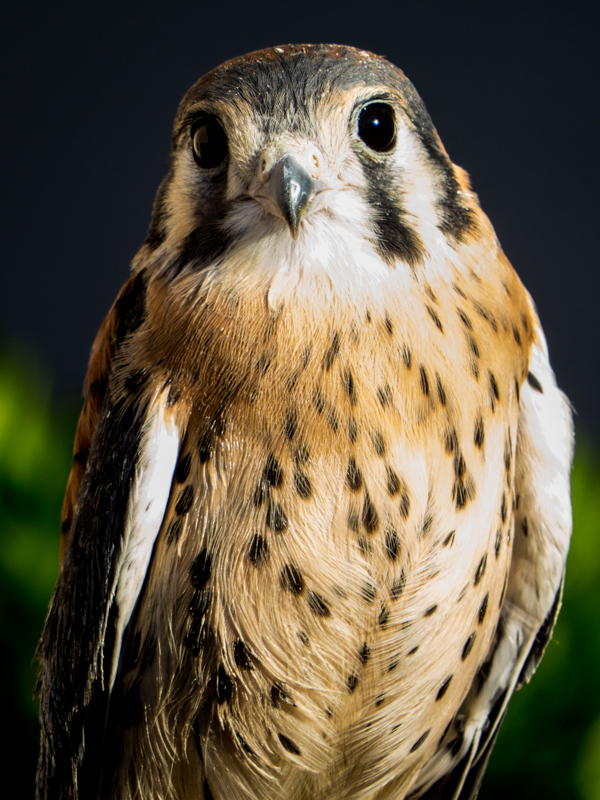
Amazingly, the bird sat on top of this fountain for more than twenty minutes. I was able to get within 15 feet of it and the only thing it did was shift its weight. The bird was extremely alert and it was riveted on my every move. You can envision what a hunter a bird like this can be with those big eyes and talons!
This would be both a birder’s and photographer’s delight. A European eagle owl in the town of Noordeinde, Netherlands likes to land on the heads of people. It apparently has had some experience with humans since it does not seem to be the least timid around them. The bird rests where it lands for a brief period and then is off to find another perch!
For those who have been following my blog for a while, you might recall that I wrote about a bird walk I took on April . You can read Part 1 here and Part 2 here.
This is the final installment in the series.
If you want more information about the “Water Ranch” more formally named the Riparian Preserve at Water Ranch in Gilbert, Arizona, you can visit their website at the link below:
Riparian Preserve at Water Ranch
You can view a map of the preserve here:
The bird walk I took was an offering of the Desert Rivers Audubon Society – Read About them here.
While we were on our walk we were able to identify several more birds not described previously. A common bird is the Great Tailed Grackle that can sometimes be found in local parking lots. Notice the yellow eyes.
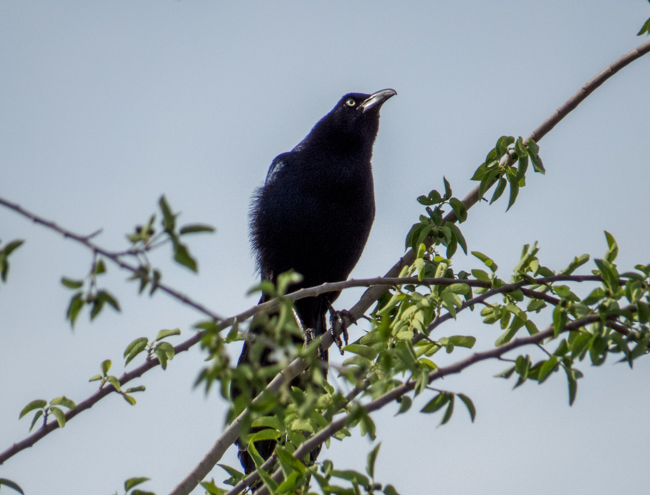
A bird that I hadn’t identified before was the Long-billed Dowitcher which enjoyed wading through the water and exploring as it walked. Every now and then, the group would take off as a unit and fly around before alighting once again.
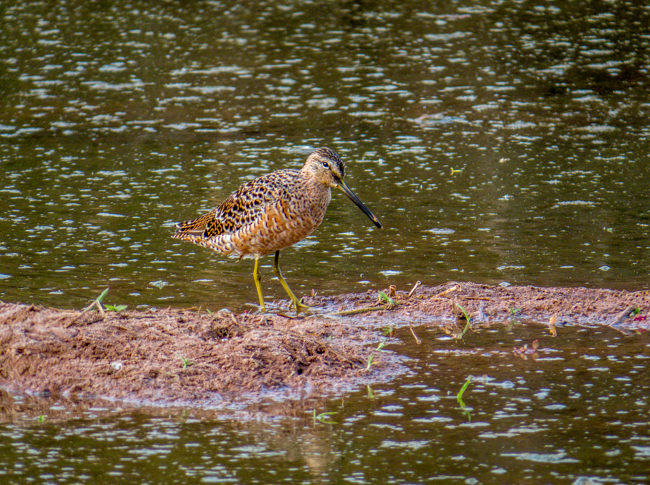
As one would expect at a place with all of this water, there were many ducks and of course cute ducklings:

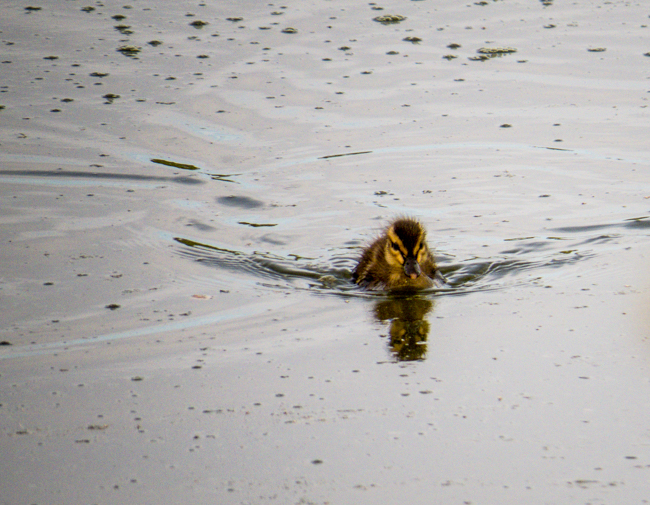
As I might have noted in previous writings, I am relatively new to the hobby of bird watching or bird identification so I was somewhat surprised to hear the term “mutt duck” used in describing some of the ducks that are apparently of mixed parentage.
While I knew that a mutt, when referring to dogs, was a mixed breed, I didn’t know this term was used elsewhere in the animal kingdom.
Here are two pictures of what our fellow birders thought were mutt ducks:
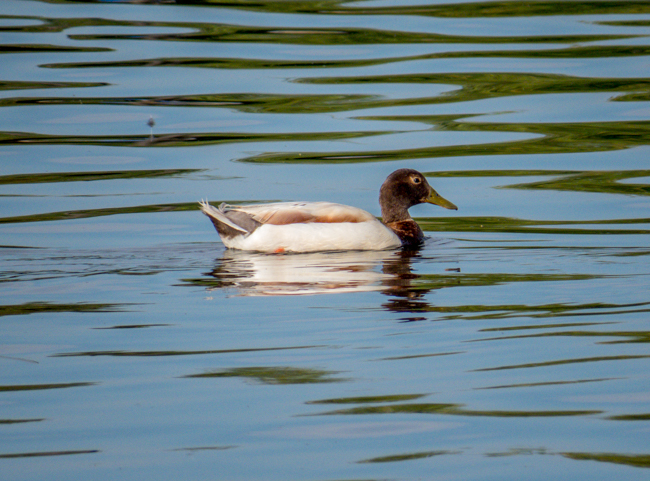
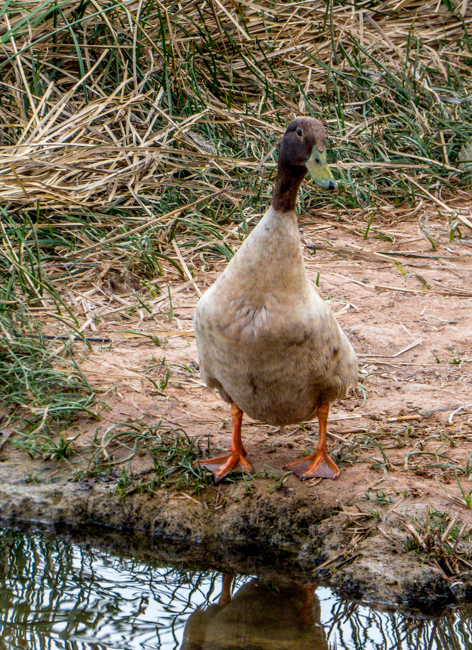
Who you calling a mutt?!
If you happen to be in the Phoenix, Arizona area, and you enjoy birding, I would recommend a stop at the Gilbert Water Ranch. It might be wise to contact them for information about the best months to visit. During the heat of the summer, the number of birds drops dramatically along with the number of visitors.
I was walking by my picture window yesterday afternoon and I saw this bird perched on a wire near a telephone pole. I hadn’t seen this bird in our neighborhood before, but recognized its hawk-like persona and thought it might be an American Kestrel.
I posted the picture on the Bird Forum and sure enough some of the experienced birders there confirmed it was an American Kestrel. They ventured, perhaps, that this is a female because of the coloration. I am sorry that the bird was so far away, but these were the best pictures I could get.
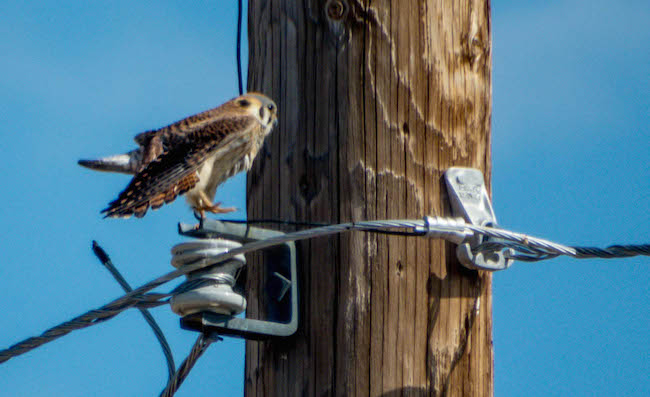
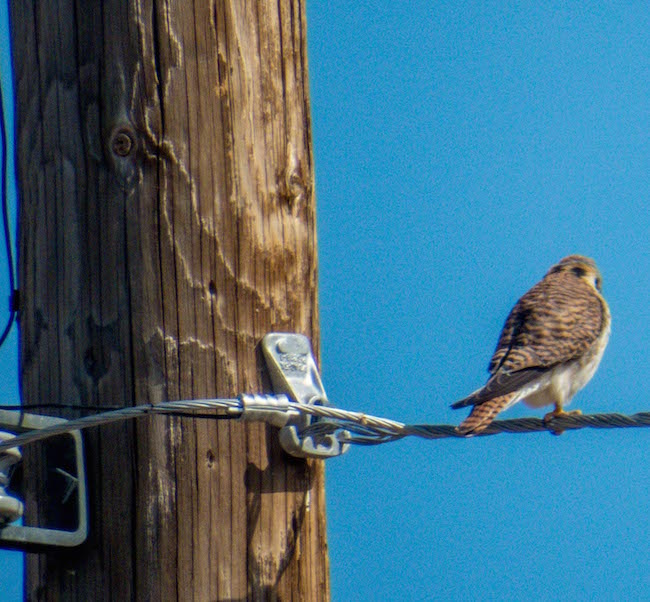

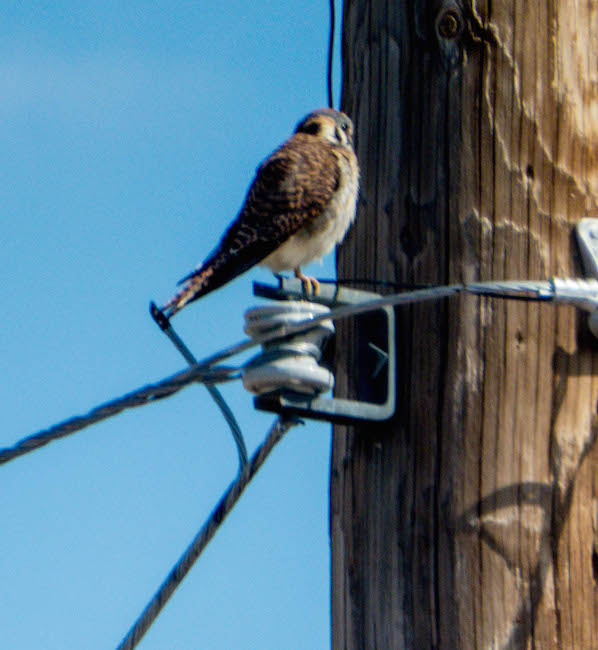
Try as I might, I could not get that bird to turn around!
NOTE: The order in which the birds and narratives appear are not the actual order in which they were seen during our bird walk.
As a follow up to Part 1 of our bird walk at the Gilbert Water Ranch, in Gilbert, AZ I am posting some additional pictures and narratives. As you might expect at something called a water ranch, this is a habitat for numerous ducks and other water fowl although having it in a desert is somewhat unique. The Mallard pictured below watched us as we watched him strike up a nice profile.
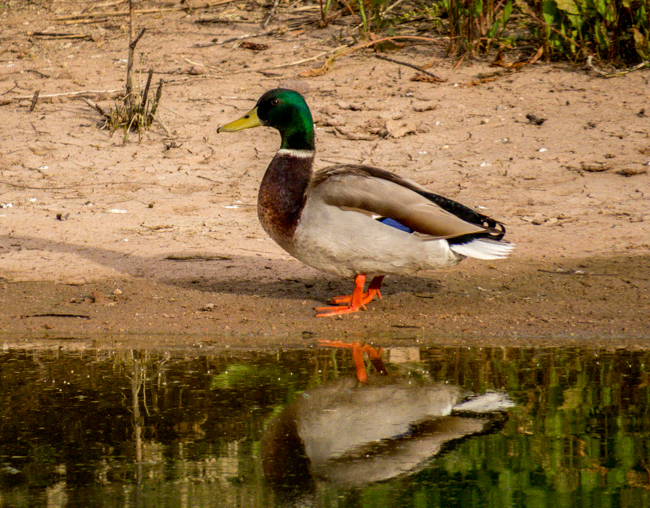
We also came across what appears to me (and I’m no expert) a Snowy Egret. He was looking intently in the water for some victuals.
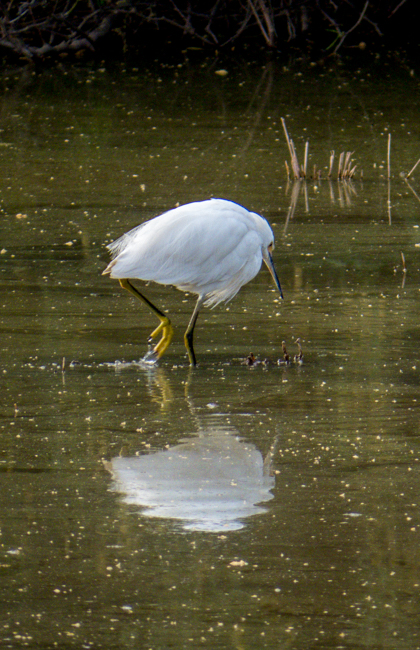
Every once in a while he looked up to allow me to snap this shot of him.
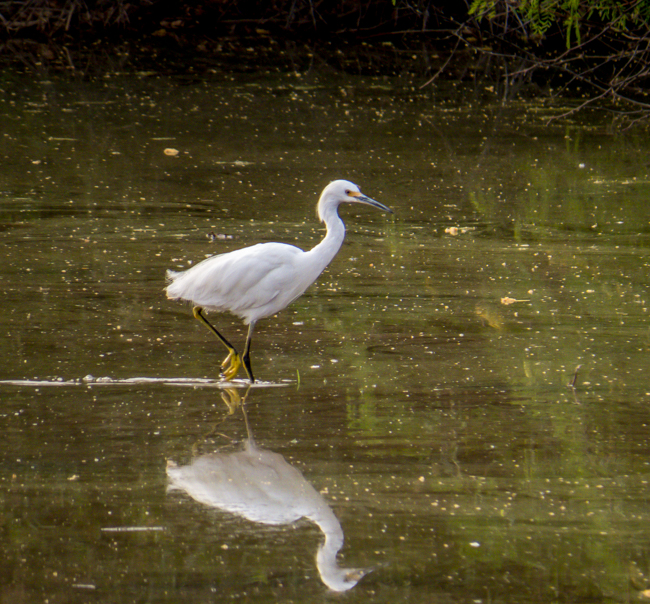
The group spotted a nest in this tree and there was a fair amount of activity around it. We saw a Verdin poised next to it. There was another nest nearby and we were wondering whether one was a fledgling nest while the other was home for adults.
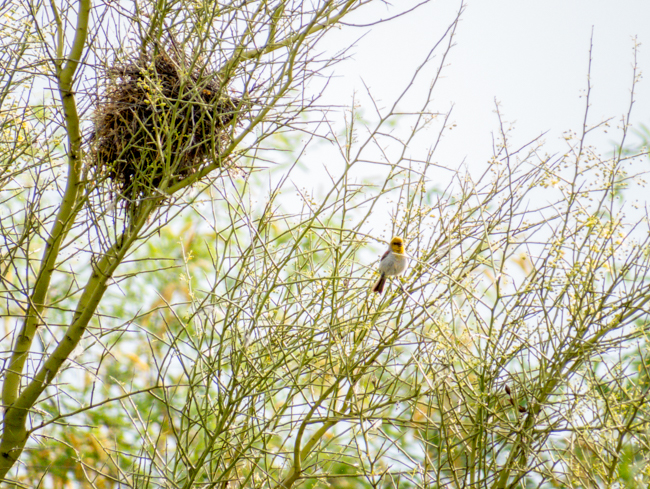
Although I had seen American Coots on a number of occasions, this is my best picture so far of the bird with its white beak. I also like the color of the eye against the dark feathers; nice! While this bird looks somewhat like a duck, it has a classification of its own.
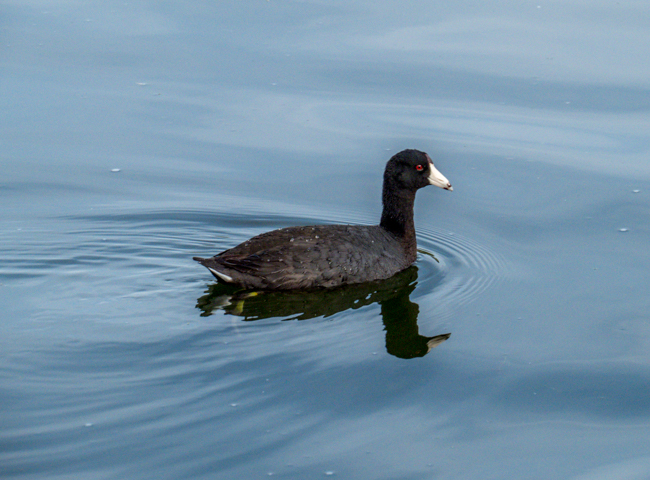
This fellow looked to me like a Great Egret.
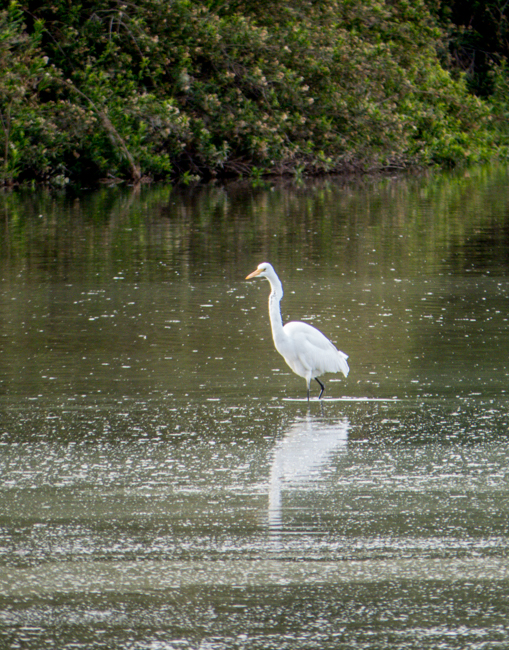
One of the last birds we saw this day, which was a surprise sighting since we were sitting around having snacks and reviewing which birds we had identified, was a Cassin’s Kingbird. He just appeared high in the tree and stayed for a while so we could marvel at his beautiful coloration.
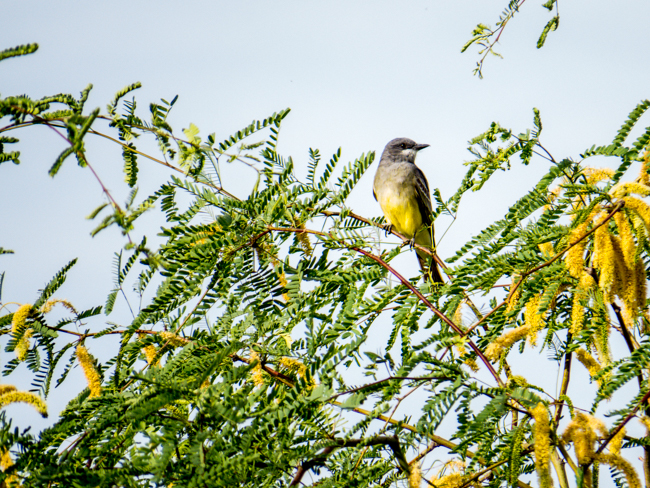
I will finish the bird walk next week with some more notes and photographs. Which bird photo did you find most interesting?
I awoke at 3:30am this morning to prepare for my “bird watch” outing at the Gilbert Water Ranch in Gilbert, Arizona. We had to be at the park by 6am and my wife and I were going to car pool with a person we had never met so we needed to be on time. Their home was 22-25 minutes away and they wanted to leave at 5:25. Of course I needed my requisite cup(s) of coffee and I also needed to get my STATUS QUOtes out to my mailing list.
[Self promotion here: If you like quotes, really good quotes, check out my STATUS QUOTes posted daily on this blog. Click here – STATUS QUOTes– to view the entire category.]
In any event, all went smoothly and we met up with our tour guide, Kathe, and proceeded to the Gilbert Water Ranch arriving on schedule. We saw a good number of birds this day. I might also mention that this is a transition time for birds in our area and some are moving out while less are moving in ahead of the long, hot summer days.
As we started our tour, a some birds already on my seen list were spotted. The first new-ish experience for me was a Mourning Dove in the crook of a Saguaro cactus. I have seen many Mourning Doves, but not in the arms of a Saguaro! Most likely this was a nest built by a Curve-billed Thrasher and usurped by the dove.
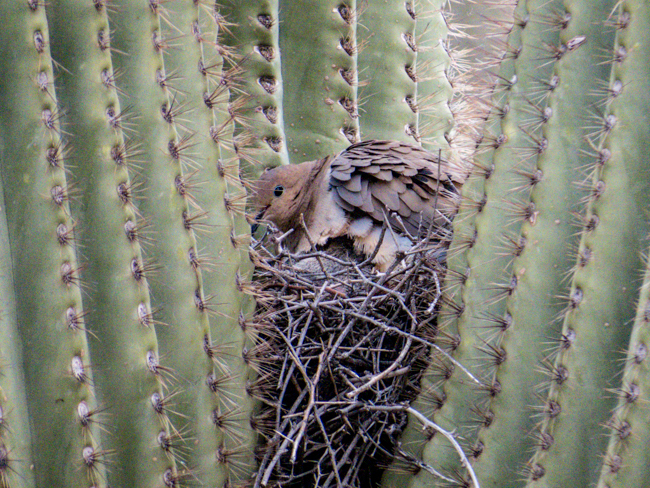
As we walked along the paths meandering through the reclamation ponds, we came across a white-crowned Sparrow. I am sure I had seen these before, but never noted it so this was a new entry on my list.
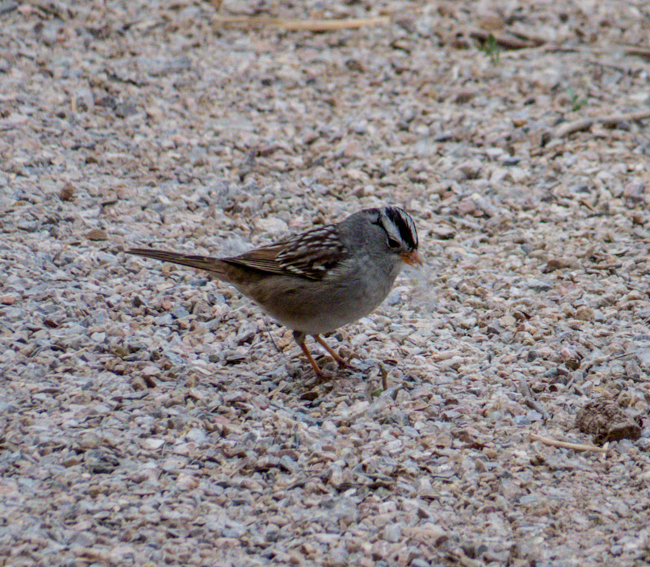
Even though this is the desert, we do have riparian and oasis-type areas that draw water birds. One such resident this day was the Neotropic Cormorant.
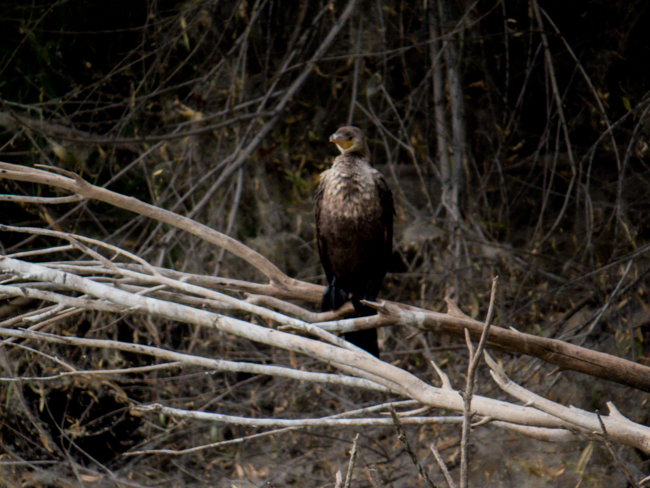
Walking on the path ahead of us was an Abert’s Towhee.
Disclaimer here: There wasn’t much light early on the walk because it was cloudy. My Superzoom really needs a lot of light to render crisp, clear shots so this may be a bit “fuzzy,” but certainly good enough for my bird-spotting history.
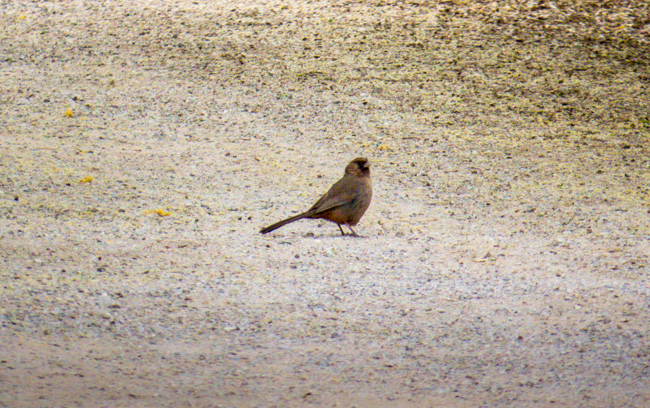
There were several sightings of Great Blue Herons. This particular bird remained perched on a man-made platform for some time so we could get a clear picture.
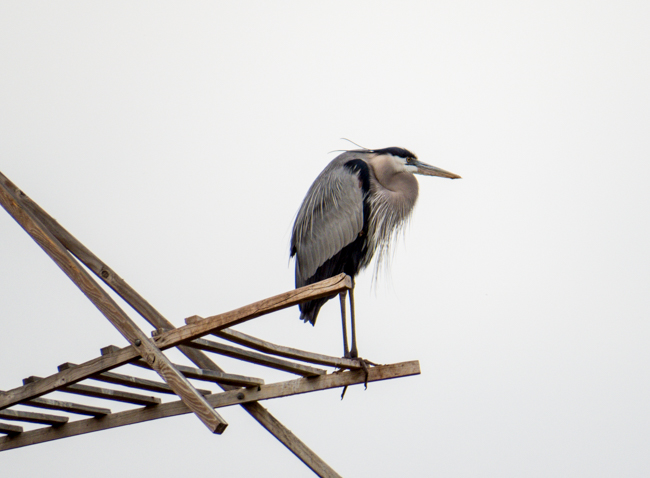
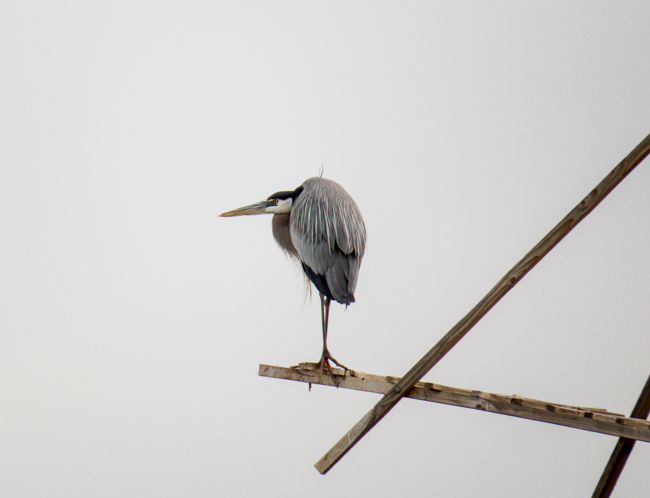
When we came to the bird below, there was some discussion whether this was a Lesser Yellowlegs or a Greater Yellowlegs. For those non-birders, this is what we do! After referring to the the Sibley Field Guide and a brief debate, it was decided that based on the size of the bird and markings, it was a Lesser Yellowlegs.
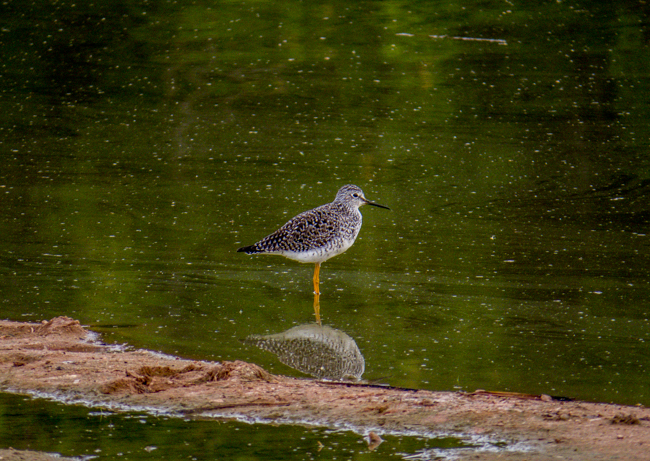
As I might have mentioned in one of my previous posts somewhere on this blog and most certainly on my previous Internet persona, Gardening on the Moon, we live on the edge of the desert and one bird we have in large numbers is the Gambel’s Quail. These birds are round and not exactly aerodynamic and thus they would rather walk or run than fly. Approaching them in a car often causes them to scurry ahead, but when forced, they do take to the air. It is unusual to spot them perched high in a tree as the bird below was spotted posing for its closeup.
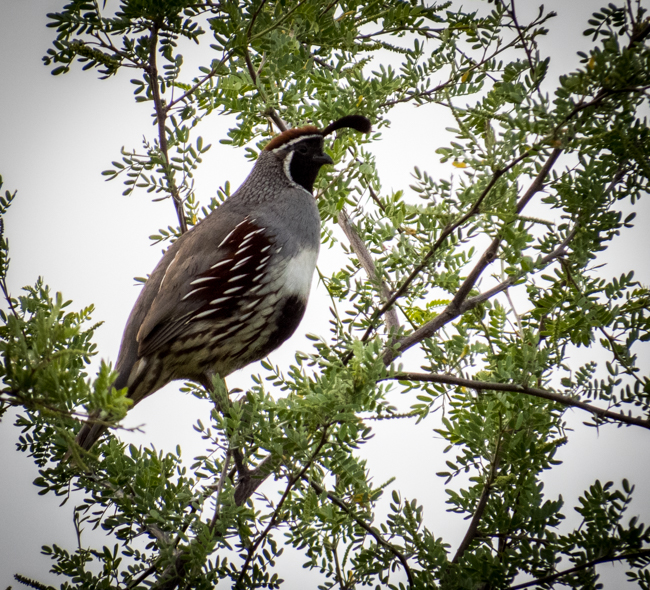
The last bird I will present today is a Green Heron. It is an unusual name for a majestic bird that doesn’t actually contain much green anywhere in its plumage! Supposedly under certain conditions, it has a blue-green “gloss.”
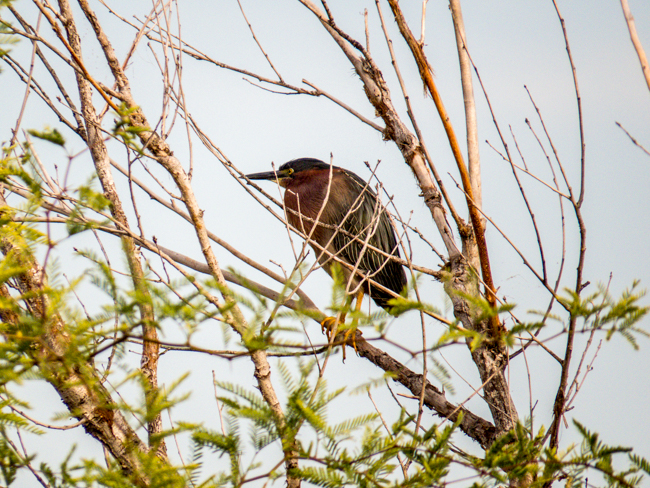
We saw a good many other birds this day and I will post our other sightings soon. Until then, I hope you have enjoyed following me along my birding journey.
The Curve-Billed Thrasher is an interesting bird, especially in the mid-to-late spring. They often “claim” a saguaro as their own and stand guard over the ripening seed pods which mature into sweet, tasty treats. Native Americans would collect these and make some delectable edibles out of them. If you want to collect them today, you need to be prepared because the Curve-billed Thrashers are patient and when the fruit is ripe, they dive right in.
These Sonoran Desert denizens are prevalent and can be seen throughout the year. They have a very distinctive call which is easy to discern. I especially like the very rich orange-yellow color of their eyes.
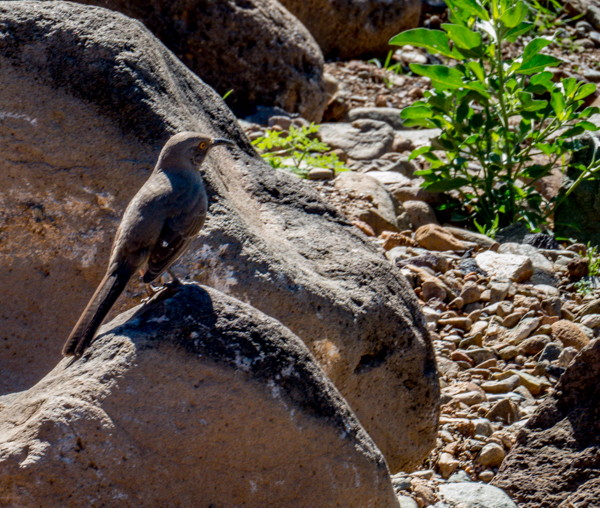
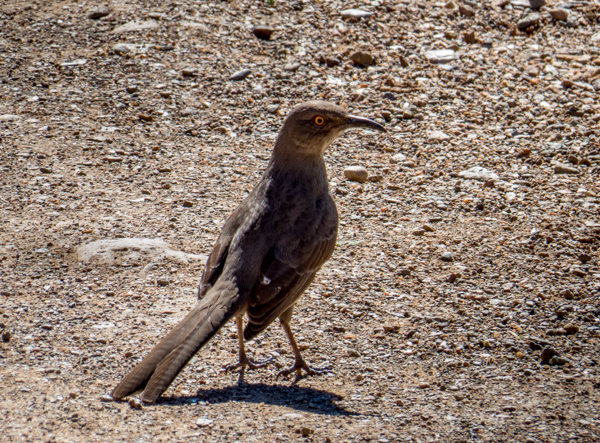
The pictures above were taken on February 9, 2015 during a hike at the Jewel of the Creek Trail, Cave Creek Arizona. The “Jewel” is a riparian habitat with a number of birds taking refuge there at various times of the year. The water runs most of the year and provides a home for frogs and other water-loving creatures.
You can read more about the Curve-billed Thrasher at the Cornell Lab of Ornithology